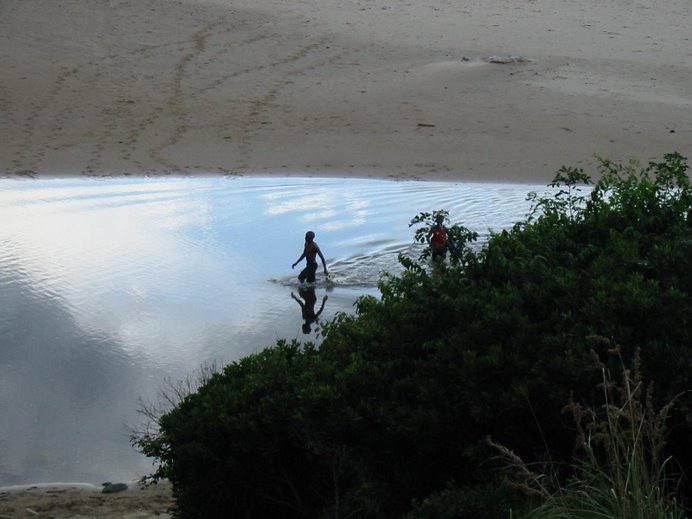 Cultural activities are being seriously degraded across South Africa as a component of a tourism industry dominated by values derived from European settlement. Despite the emergence of a significant black leisure market, much product packaging remains tailored to American, European and white South African tastes and value systems.
Cultural activities are being seriously degraded across South Africa as a component of a tourism industry dominated by values derived from European settlement. Despite the emergence of a significant black leisure market, much product packaging remains tailored to American, European and white South African tastes and value systems.These pictures were taken at a soccer tournament held to launch a business development venture in a deep rural part of the Wild Coast (Cwebe village). The tournament guaranteed attendance of large numbers of villagers, and allowed an assortment of cultural groups to showcase traditional dancing.
What makes these pictures unique is that the activities were directed at local residents, without the trappings and compromises involved in the tourism industry. More pictures will be released in subsequent postings. The event took place in a particularly picturesque valley, surrounded by village dwellings and indigenous forest, with the sea clearly visible close by.
While older participants naturally organised their performances in synchrony with their experience of traditional activities and dress, organisers of the youth groups are dedicated and highly committed crafters of traditional culture, operating without financial or logistical support.











 Taken at Mtentu, Wild Coast, South Africa. An Australian company
Taken at Mtentu, Wild Coast, South Africa. An Australian company The community-owned and managed Amadiba Horse & Hiking trail traverses the coast from Mzamba to Mtentu.
The community-owned and managed Amadiba Horse & Hiking trail traverses the coast from Mzamba to Mtentu.